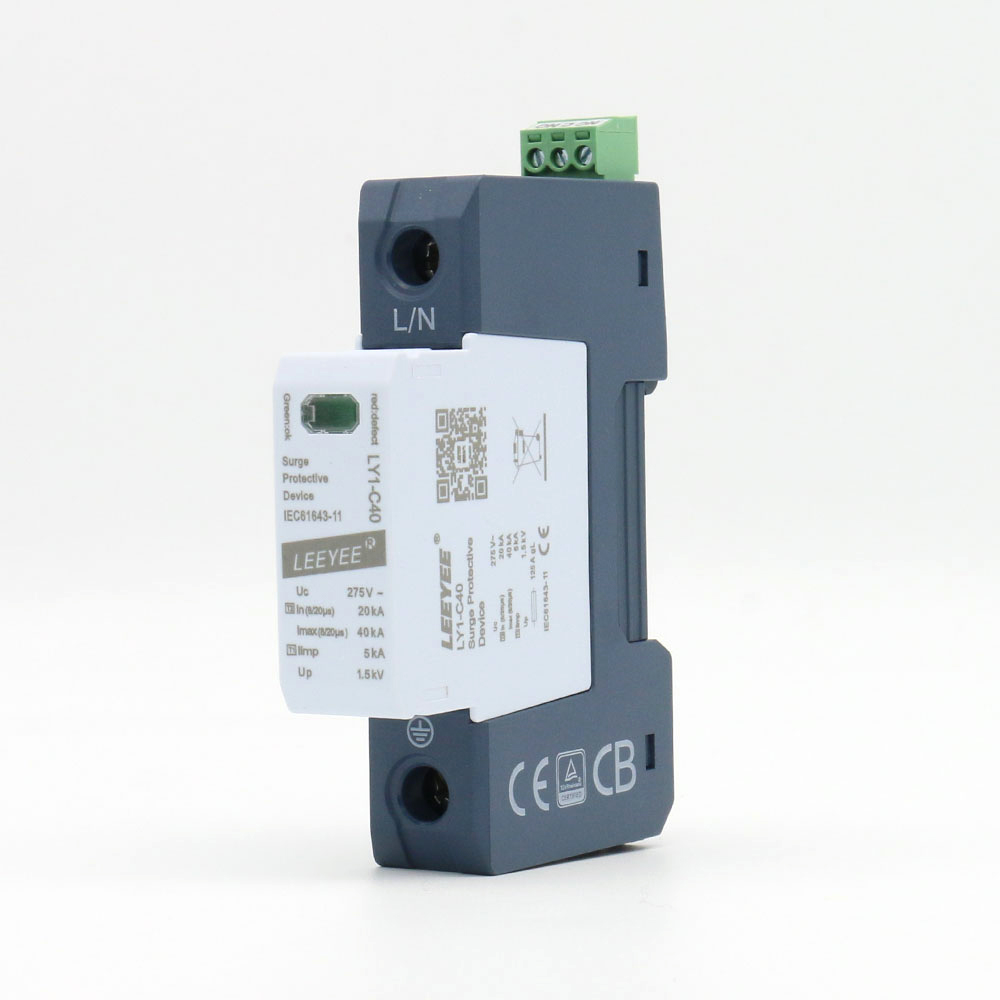1. Introduction
Modern electrical systems demand both safety and reliability. With technological advances, more equipment now depends on stable power. However, voltage fluctuations and surge voltages—like those from lightning or grid failures—pose serious risks. That’s why we need effective protective measures. In this article, we explore the basics, working principles, functions, application scenarios, installation, maintenance, and selection criteria of SPDs and over/under voltage protectors in solar energy systems. By the end, readers will understand why both devices are essential.
2. Definitions
SPD (Surge Protection Device)
An SPD safeguards equipment from sudden high voltage. When surges occur, it quickly channels excess voltage to the ground. This protects connected devices in environments such as data centers and high-standard electrical systems.
Over/Under Voltage Protector
This device monitors voltage levels continuously. If voltage exceeds or drops below set thresholds, it disconnects power to prevent damage. Such protectors are common in residential setups, industrial equipment, and renewable energy systems.
3. Working Principles
SPD Working Principle
An SPD uses varistors or gas discharge tubes to channel surge currents safely to ground. When voltage spikes, these components act within nanoseconds, protecting downstream devices.
Over/Under Voltage Protector Working Principle
This protector uses sensors to monitor voltage. If voltage leaves the safe range, it disconnects the power via control circuitry. Often, these devices also trigger alarms when abnormalities occur.
4. Functions and Features
Functions of SPD
-
Surge protection: Guards against lightning or switching surges.
-
Reliability boost: Keeps systems operational under adverse conditions.
-
Equipment longevity: Reduces stress on devices, extending their life.
Functions of Over/Under Voltage Protector
-
Real-time monitoring: Tracks voltage continuously.
-
Auto disconnection: Cuts power when voltage goes out of bounds.
-
Alarm alerts: Notifies users upon detecting voltage issues.
5. Main Application Scenarios
SPD Applications
SPDs find use in:
-
Homes and commercial buildings: Protects electronics against lightning and power issues.
-
Industry: Safeguards motors and sensitive instruments.
-
Data centers: Ensures consistent server and network device operation.
Over/Under Voltage Protector Applications
Protectors are essential for:
-
Household circuits: Safeguards appliances like refrigerators and AC units.
-
Industrial setups: Maintains voltage within safe limits.
-
Renewable systems: Protects inverters and batteries from voltage fluctuations.
6. Protection Needs in Solar Energy Systems
Solar System Characteristics
Solar systems include PV panels, inverters, storages, and loads. These face disturbances like lightning-induced surges and voltage swings caused by weather or load changes.
SPD Necessity
SPDs protect inverters and electronics by diverting high voltage spikes. This boosts system reliability during harsh weather.
Over/Under Voltage Protector Necessity
These protectors prevent damage from voltage out-of-range by disconnecting power. They help prolong inverter and battery life.
Combined Protection Importance
While SPDs handle fast surges, over/under voltage protectors manage sustained deviations. Together, they offer full protection against multiple voltage threats.
7. Installation and Maintenance
SPD Installation Requirements
-
Mount SPDs near the system’s power entry for optimal protection.
-
Use correct wiring per manufacturer diagrams.
-
Ensure grounding wires are as short and direct as possible.
Over/Under Voltage Protector Installation
-
Follow national and local electrical codes.
-
Check device functionality periodically.
Maintenance Recommendations
-
Test both devices regularly—at least annually.
-
Inspect them visually for signs of wear or aging.
-
Hire a certified electrical engineer for yearly system inspections.
8. Selection Recommendations
Choosing an SPD
-
Match its surge current capacity to system needs.
-
Consider installation environment, especially in areas with frequent storms.
-
Prioritize SPDs for critical equipment like servers or medical devices.
Choosing an Over/Under Voltage Protector
-
Ensure its rated voltage matches the equipment.
-
Prefer it in regions with unstable power.
-
Use it in complex systems requiring extra voltage safety.
9. Why Use Both SPD and Over/Under Voltage Protectors
Using both devices together ensures full voltage protection. SPDs manage instantaneous surges, while voltage protectors guard against sustained abnormal voltages. This combo enhances system safety and minimizes equipment risk.
10. FAQs
Q1: Can SPD protect against over/under voltage?
No. SPD only handles surges, not sustained voltage deviations.
Q2: Can over/under voltage protectors handle surges?
No. They monitor voltage levels and offer no spike protection. Use both types together for complete coverage.
11. Conclusion
SPDs and over/under voltage protectors play vital roles in modern electrical systems, especially in solar installations. By understanding how they work and their application, you can improve safety, reliability, and equipment lifespan. For help selecting, installing, or maintaining these devices—or professional advice—please contact us. We’re happy to support you.
Frequently Asked Questions (FAQ)
What is the main difference between SPD and OVP/UVP?
SPD protects against sudden surges like lightning, while OVP/UVP protects against sustained over- or under-voltage. They complement each other.
Can I use only SPD without OVP/UVP?
No. SPD alone cannot handle prolonged voltage deviations. For full protection, use both SPD and OVP/UVP together.
Do solar systems need both SPD and OVP/UVP?
Yes. SPDs protect inverters from lightning and switching surges, while OVP/UVPs prevent damage from unstable voltages in solar systems.


